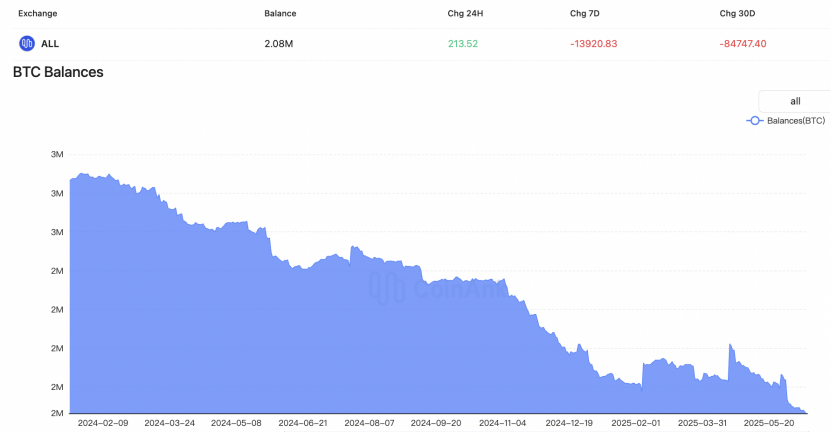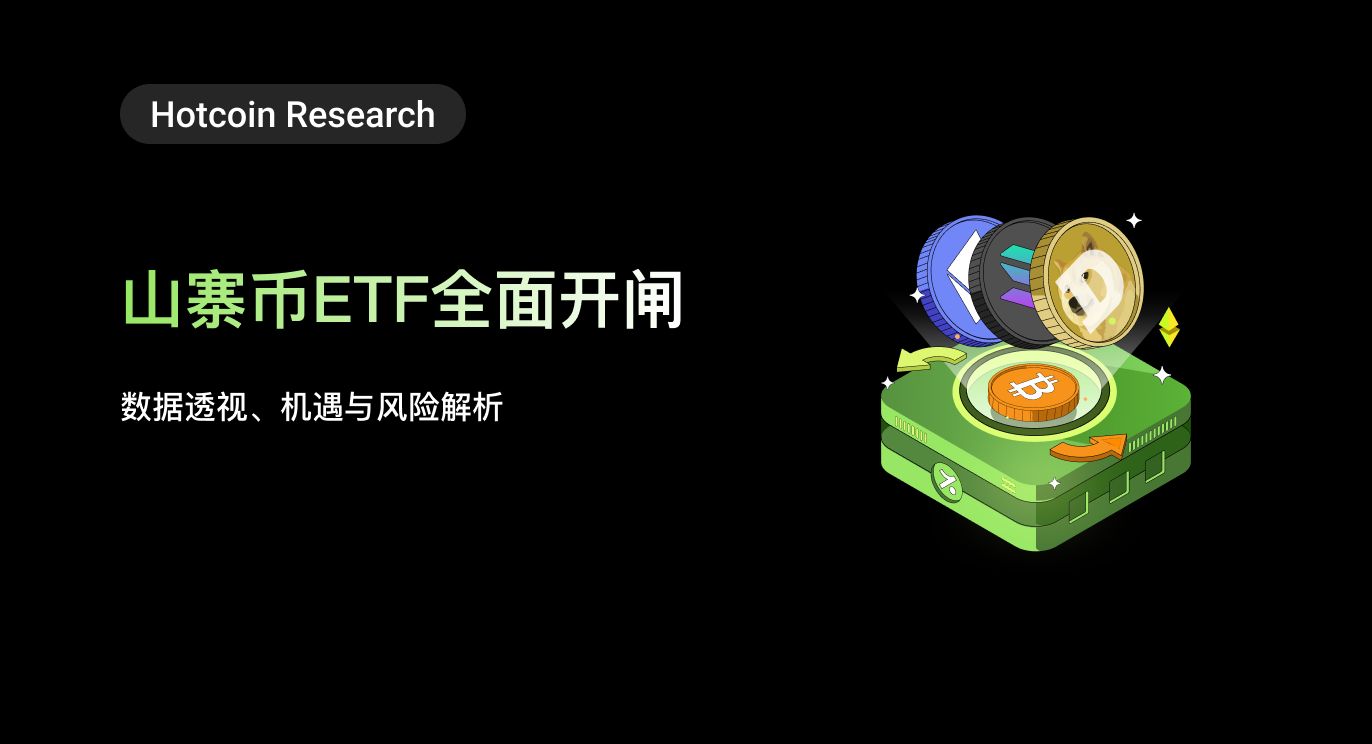The Federal Reserve Keeps Interest Rates Unchanged, but the Dot Plot Indicates Two Rate Cuts This Year! On-chain BTC Balances Hit Historic Lows!
Macro Interpretation: The Federal Reserve's meeting early this morning concluded with the benchmark interest rate remaining unchanged. Although the dot plot maintains expectations for two rate cuts this year, internal dissent has increased, and divisions have become public. Chairman Powell clearly stated that rate cuts must be predicated on a sustained decline in inflation. This "data-driven" hawkish stance quickly dampened market enthusiasm for a July rate cut, with the probability plummeting to around 10%. The policy balance is swaying between economic growth and inflation control, with uncertainty pervasive, causing risk assets to come under pressure.
The delay in the Fed's rate cut window and the widening internal rifts undoubtedly cast a shadow over short-term liquidity in the crypto market, making volatility management an urgent priority. However, historical patterns indicate that once a rate cut cycle is established, the massive liquidity released in a low-interest-rate environment will ultimately benefit high-risk assets like Bitcoin, which still possesses long-term appeal as a hedge against the dilution of dollar purchasing power.
In the short-term market performance, Bitcoin's price is trapped in a narrow range around $105,000, with mainstream coins like ETH and SOL experiencing slight declines, while MEME coins have seen more significant drops. Market trading volume has also shrunk, as investors, caught between the Fed's cautious stance and escalating geopolitical risks in the Middle East (rumors of potential U.S. involvement in the Israel conflict), have shown a marked increase in risk-averse sentiment, leading to a clear retreat in risk appetite.
However, on-chain data reveals a deeper resilience in the market. Fidelity Digital Assets' latest report highlights a key trend: "10-year Bitcoin," or Bitcoin that has not moved for at least ten years, is accumulating at an astonishing rate. Since April of this year, an average of 566 BTC has joined this "ultra-long-term holding" camp daily, surpassing the approximately 450 BTC added daily by miners. Currently, the total amount of Bitcoin that has been dormant for over ten years has exceeded 3.4 million coins, accounting for over 17% of the total BTC mined. Fidelity expects that as new coin production continues to decline post-halving, by 2030, this "fossil-grade" Bitcoin will exceed 20%. Interestingly, CoinAnk data shows that the willingness of both whales and retail investors to transfer Bitcoin to exchanges has dropped to a cyclical low. The silence and reluctance to sell among holders in the face of market turbulence have created strong support from below.
At the same time, a revolution regarding the future of currency forms is quietly gaining institutional endorsement. U.S. Treasury Secretary Yellen publicly expressed a shocking viewpoint: cryptocurrencies will not threaten the dollar's hegemony; instead, stablecoins may become a new tool to reinforce its global dominance. She stated that digital assets are one of the most important phenomena in today's world, criticized past governments for neglecting them, and emphasized that this administration will fully promote the U.S. as a center for digital asset innovation. This stance resonates with Trump's recent high-profile call for the House to pass the "GENIUS Act" as soon as possible. The shift in political winds has ignited market enthusiasm: the crypto sector in U.S. stocks surged, with stablecoin giant Circle's stock soaring 33.8% and Coinbase rising 16%. Analysts from Wall Street firms Bernstein and Barclays unanimously believe that if the bill is passed by the end of summer, stablecoins will leap from being payment tools in the crypto ecosystem to becoming the "currency track of the internet," opening explosive revenue growth opportunities for core infrastructure companies like Circle and Coinbase.
Currently, the market faces uncertainty from macro policies suppressing risk appetite on one side, while on the other, on-chain data showcases remarkable holding strength and long-term faith—millions of Bitcoins have fallen silent over time, with increasing chip locking. The regulatory thaw, particularly the dawn of stablecoin legalization and institutionalization represented by the "GENIUS Act," injects structural benefits into the industry. It could not only reshape the global payment landscape and solidify the dollar's digital-era hegemony but also introduce vast incremental funds and a compliance development framework from the traditional financial world into the crypto market.
Therefore, despite being constrained in the short term by the Fed's "wait-and-see" posture and geopolitical turbulence, the crypto market, especially Bitcoin, remains driven in the long term by two core engines: the certain trend of a global liquidity cycle turning towards easing and the leap in industry infrastructure and mainstream acceptance brought about by stablecoin regulation. Investors need to maintain strategic composure amid volatility; time will ultimately prove that silent holding and regulatory breakthroughs are quietly laying the groundwork for the next round of value reassessment.

BTC Data Analysis:
CoinAnk data shows that BTC prices are maintaining a high consolidation range between $100,000 and $110,000, but on-chain data indicates that the BTC reserves on exchanges have dropped to near historic lows. Whether large institutional investors (whales) or retail investors, the number of Bitcoins transferred to trading platforms has significantly declined, indicating a strong reluctance to sell among holders in a volatile price environment, with a firm willingness to hold.
From a market structure perspective, this change in supply and demand reflects investors' recognition of BTC's long-term value. The decline in exchange balances directly exacerbates the scarcity in circulation, while the continued accumulation by whales (such as new whales entering the market in 2025 at record speeds) and the exit of retail investors create a divergence that may shift the market from being dominated by retail sentiment to an institutional allocation phase. Historical data shows that when whales accumulate during market pullbacks, it often signals a price rebound. Currently, BTC's annual volatility has dropped to historic lows, and risk-adjusted returns still outperform traditional assets, further solidifying its position as a value storage tool. However, caution is warranted regarding the risk of insufficient liquidity—if the market cannot absorb selling pressure, it may trigger a short-term sharp decline (as indicated by support levels in 2024 models). Overall, the rising concentration of holdings and supply contraction may build momentum for BTC to break through the $110,000 resistance level, but macroeconomic changes (such as expectations of U.S. GDP contraction) remain potential disruptive factors.
免责声明:本文章仅代表作者个人观点,不代表本平台的立场和观点。本文章仅供信息分享,不构成对任何人的任何投资建议。用户与作者之间的任何争议,与本平台无关。如网页中刊载的文章或图片涉及侵权,请提供相关的权利证明和身份证明发送邮件到support@aicoin.com,本平台相关工作人员将会进行核查。




